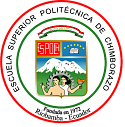Analysis of Electric Fields Levels in the GSM 1900MHz Band at the Polytechnic School of Chimborazo
DOI:
https://doi.org/10.47187/perspectivas.vol2iss1.pp8-13.2020Keywords:
Electromagnetic fields, GSM band, Exposure limitAbstract
An analysis of the electromagnetic fields measured on the campus of the Escuela Superior Politécnica de Chimborazo (ESPOCH) is presented, ESPOCH has a considerable population transit with about 14,000 students, administrative staff, and teachers who remain exposed daily, during their working hours, to non-ionizing radiation generated by a base station installed by a mobile phone service operator. It leads a question, whether the health of those exposed to these radiations could be compromised due to this. The present research study shows the measurements in the 1900MHz GSM band for seven days at fixed location: 370m away from the antenna. The main objective is determining if the radiation levels are within established limits by the regulatory entity. Or identify if there is a risk for the university community for the increasing number of antennas for the mobile telephony and mobile broadband service. In the discussion we show that electromagnetic fields are within limits established by the World Health Organization.
Métricas
References
Agencia de Regulación y Control de las Telecomunicaciones, «Boletín estadístico IV Trimestre del 2018,» Quito, 2018.
P. A. N.Tchernitchin, «Efectos de la Radiación Electromagnética Sobre la Salud con Énfasis en la Telefonía Celular,» Concepción, 2011.
T. Unger, «Las antenas Móvles, los Celulares y la Salud,» Lima, 2003.
V. M. Cruz, «Riesgo para la Salud por Radiaciones no Ionizantes de las Redes de Telecomunicaciones en el Perú,» Revista Peruana de Medicina Experimental y Salud Pública , vol. 26, nº 1, pp. 94 - 103, 2009.
L. V. Wouth Joseph, E. Tanghe y L. Martens, «IN-SITU MELECTROMAGNETIC fiELD EXPOSURE OF THE GENERAL PUBLIC,» Health Physics Journal, 2009.
A. E. C. R. P. G. A. Guillermo Aponte, «Electromagnetic Field Measurement in the City of Cali, Colombia,» Información Tecnológica, vol. 18, nº 3, pp. 39-47, 2007.
Unión Internacional de Telecomunicaciones, «Supervisión de los Niveles de Intensidad del Campo Electromagnético Aplicación de la Recomendación UIT . T K.83,» 2015.
Sector de Normalización de las Teelcomunicaciones UIT, «Recomendación UIT - T K.83,» 2011.
Sector de Normalización de las Telecomunicaciones de la UIT, «Recomendación UIT-T K.52,» 2016.
E. V. Clement Temaneh-Nyah, «RF radiation exposure levels from the Valombola base station, in the faculty of engineering and IT vicinity, Ongwediva, Namibia,» de Emerging Trends in Networks and Computer Communications (ETNCC), 2015, Windhoek, Namibia, 2015.
S. Osvaldo, L. María, C. María, S. Virginia y A. Néstor, «Evaluación de la exposición a campos electromagnéticos de radiofrecuencia,» An. Fac. Cienc. Méd., vol. 51, nº 2, pp. 47-54, 2018.
M. P. Fandiño, V. A. Arana y J. E. Trilleras, «Análisis Comparativo de los Niveles de Exposición a Campos Electromagnéticos Irradiados por Estaciones de Telefonía Móvil en el Municipio de Soledad, Atlántico, en Colombia,» Información Tecnológica, vol. 29, pp. 157-166, 2018.
Published
How to Cite
Issue
Section
License
Copyright (c) 2020 Pedro Severo Infante Moreira, Neiser Ortiz Mosquera, Ximena Trujillo

This work is licensed under a Creative Commons Attribution 4.0 International License.
Copyright
The authors of the manuscripts will retain their copyright on their articles published in Pespectivas Journal. These rights allow the authors to present their manuscripts in public, prepare derivative works, reproduce them physically by printing and distribute them on their social or research networks. These rights will remain unchanged as long as the authors respect the publication and free access policy of Perspectivas Journal.
Publication Rights
Perspectivas Journal reserves all first publication rights on each of the articles that the authors have sent to its review and publication process. It implies that authors will only exercise their copyright if they state the source and origin of the publication correctly, mainly when they distribute, share, present, or use their articles' total or partial content.














